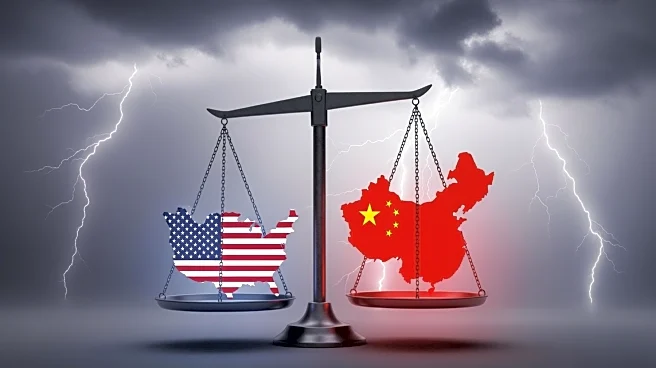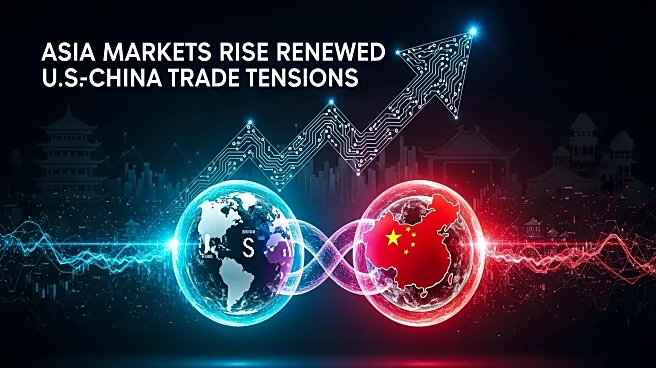What's Happening?
U.S. Treasury Secretary Scott Bessent announced the implementation of price floors in various industries to counteract China's influence in the rare earth market. This move is part of the Trump administration's
strategy to combat what Bessent describes as China's 'nonmarket economy,' which has been driving foreign competitors out by slashing prices. Price floors are a form of government price control that sets a minimum price suppliers can charge, typically above the market rate. This decision comes amid ongoing trade tensions between the U.S. and China, with President Trump maintaining a firm stance on trade issues.
Why It's Important?
The introduction of price floors is significant as it represents a direct intervention in the market by the U.S. government to protect domestic industries from foreign competition, particularly from China. This policy could stabilize prices in affected sectors, potentially benefiting U.S. companies struggling to compete with China's pricing strategies. However, it may also lead to higher consumer prices and could provoke further trade tensions. The move underscores the administration's commitment to addressing trade imbalances and protecting U.S. economic interests.
What's Next?
The impact of the price floors will likely be monitored closely by industry stakeholders and policymakers. There may be reactions from China, which could escalate trade tensions further. Additionally, the effectiveness of this policy in stabilizing the affected industries will be evaluated, potentially influencing future economic strategies. Major U.S. banks have reported strong earnings, suggesting resilience in the economy despite these trade challenges, which may influence market confidence and investment decisions.
Beyond the Headlines
This development highlights the broader geopolitical struggle between the U.S. and China, with economic policies being used as tools in this conflict. The ethical implications of government intervention in the market, such as price controls, may be debated, considering the balance between protecting domestic industries and maintaining free market principles. Long-term shifts in trade policy could emerge from this strategy, affecting global economic dynamics.











